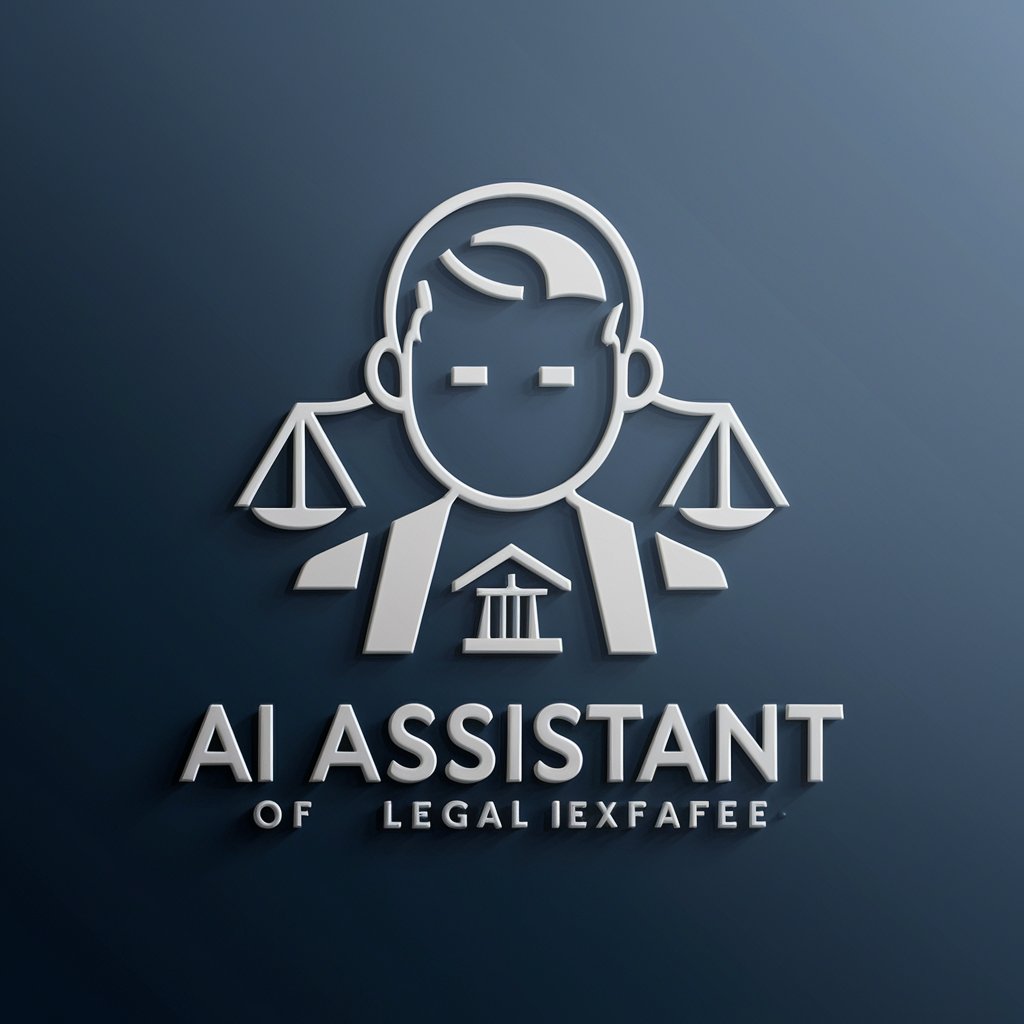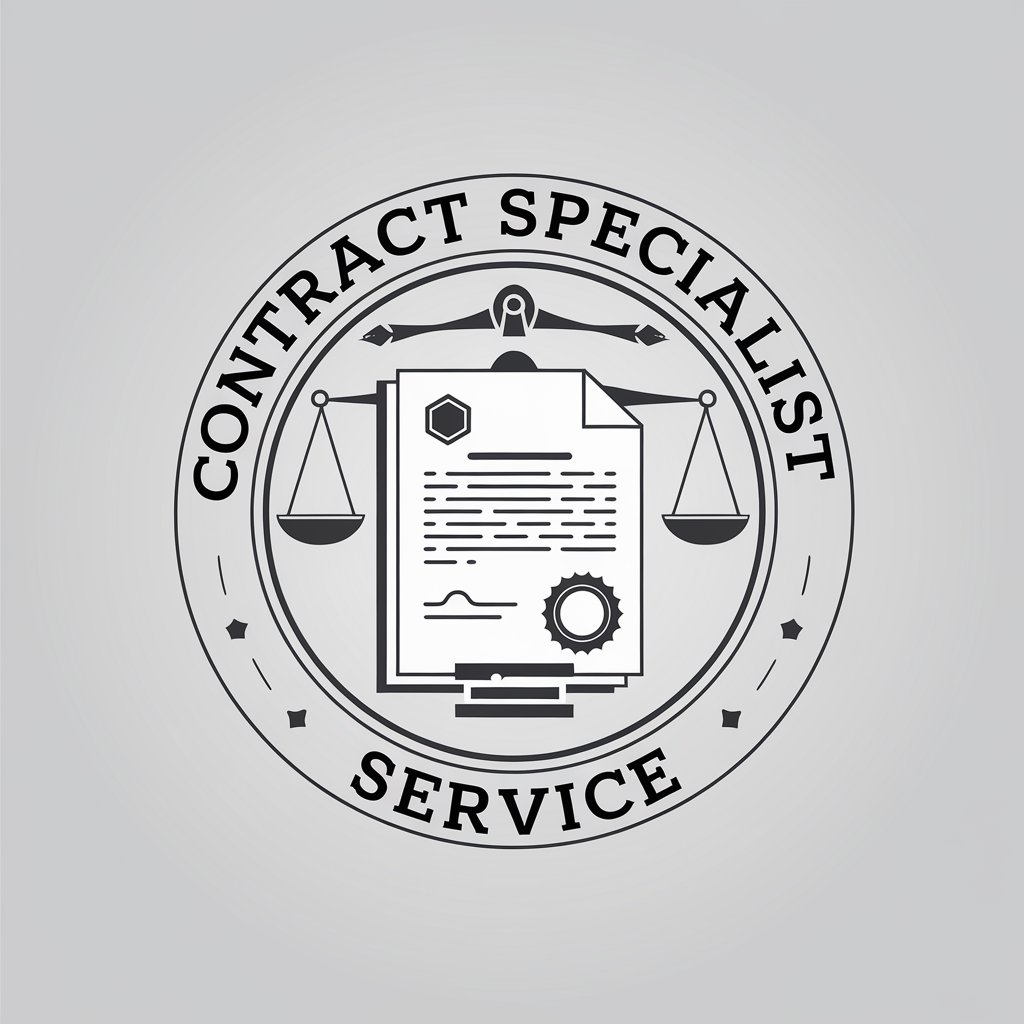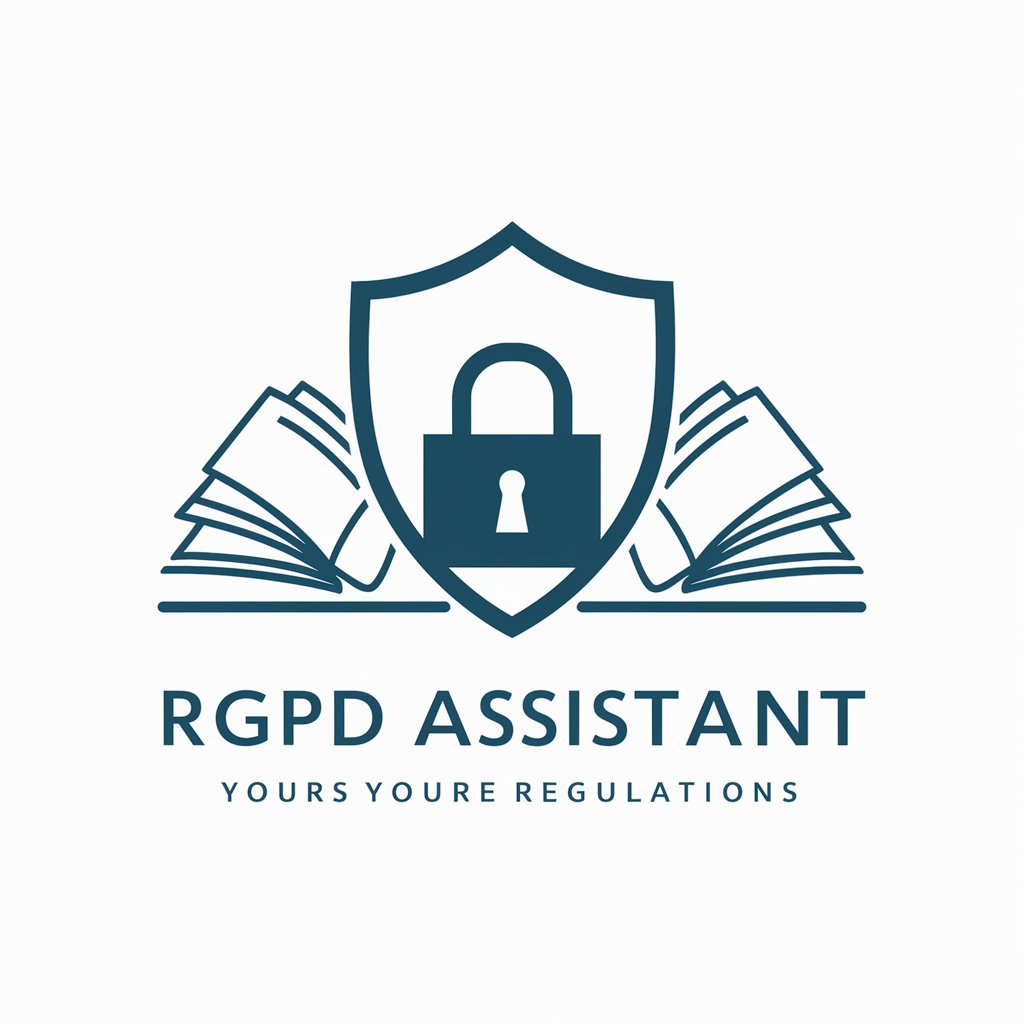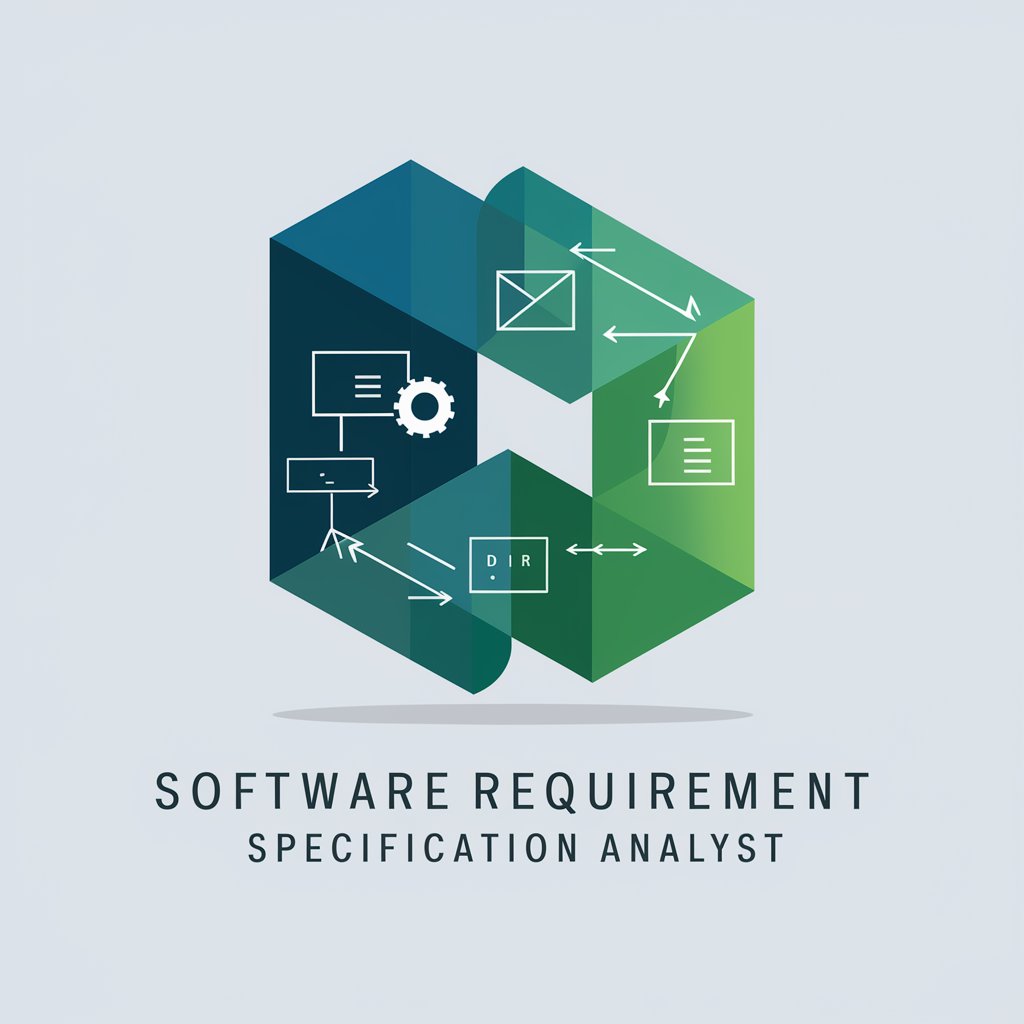
Government Bid RFP Proposal Assistant-AI RFP Proposal Builder
AI-powered proposal drafting for government bids
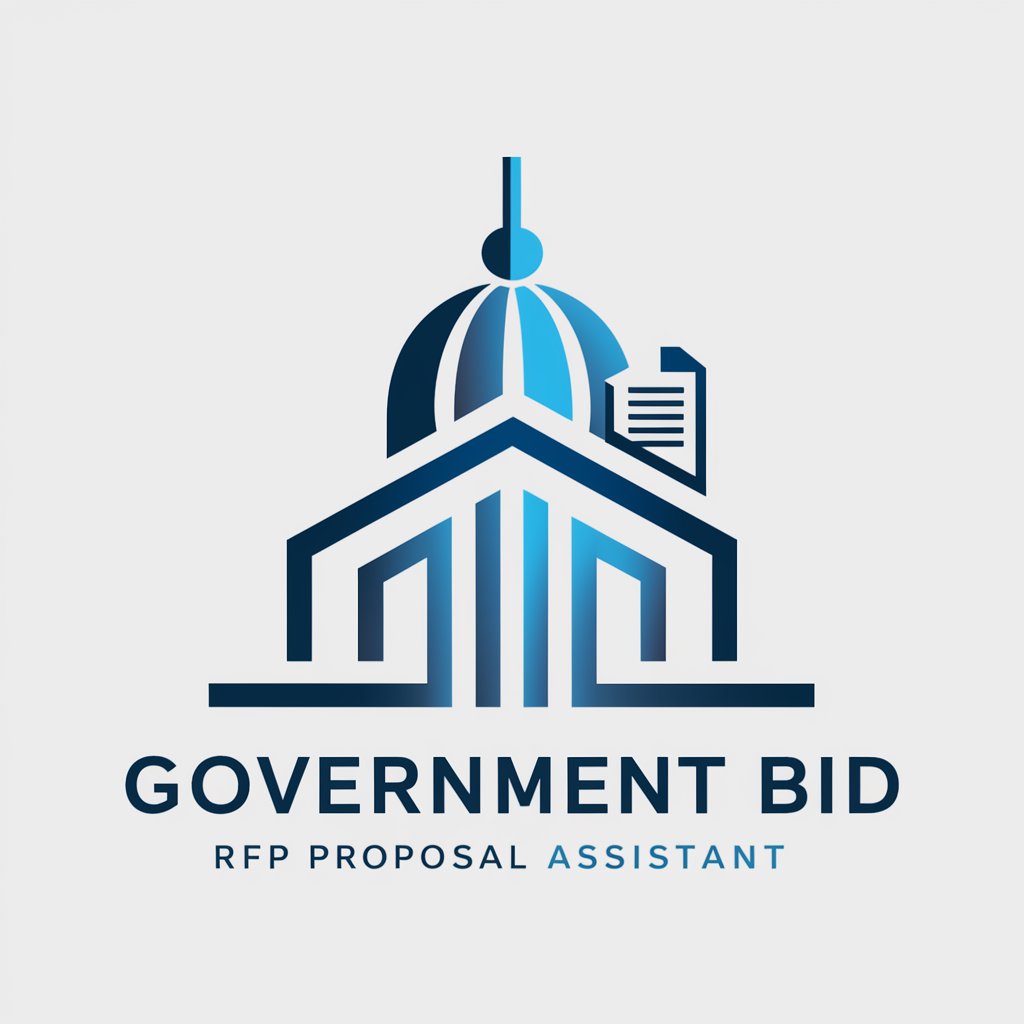
I assist in writing government bid proposals, analyzing RFPs, and guiding proposal drafting.
Analyze this RFP for key requirements.
How should I describe my business in the proposal?
What past performance details are relevant here?
Guide me through responding to this RFP section.
Get Embed Code
Introduction to Government Bid RFP Proposal Assistant
The Government Bid RGovernment Bid RFP AssistantFP (Request for Proposal) Proposal Assistant is a tool designed to streamline and enhance the process of creating, submitting, and managing proposals for government contracts. The assistant aids users in understanding the complexities of government bidding, ensuring compliance with various regulations, and improving the overall quality and competitiveness of their proposals. This tool typically incorporates features such as document management, automated formatting, regulatory checks, cost estimation, and proposal scoring. Its design focuses on addressing the challenges often faced by businesses in navigating the rigorous demands of government contracting. **Example:** Consider a small business interested in securing a federal contract. The proposal assistant helps them break down the RFP requirements, create a well-structured proposal document, and even generates a cost estimation based on the requirements outlined in the RFP. This improves their chances of meeting the strict standards required for government contracts.
Main Functions of Government Bid RFP Proposal Assistant
Automated Proposal Generation
Example
The assistant can automatically generate proposals by pulling in relevant data from the RFP and applying best practices for structure, format, and compliance.
Scenario
A company receives an RFP for a new government projectGovernment Bid RFP Assistant. Instead of manually drafting the proposal, they use the proposal assistant, which generates a first draft by aligning the RFP's criteria with their company's capabilities and past performance data. The tool ensures that all the essential sections, such as the executive summary, technical approach, and management plan, are included and formatted according to government standards.
Compliance and Regulatory Checks
Example
The assistant checks for compliance with the specific rules and guidelines outlined in the RFP, such as legal requirements, document formatting, and required certifications.
Scenario
A business submits an RFP response to a local government. Before submission, the proposal assistant scans the document to ensure all required forms (e.g., certifications of good standing, insurance documents) are attached, and that it adheres to formatting requirements. It flags any missing or incorrect information, reducing the risk of disqualification due to non-compliance.
Cost Estimation and Budgeting
Example
The proposal assistant can calculate cost estimates based on RFP requirements, using inputs like labor rates, materials, and overhead costs, ensuring that the proposal is financially sound.
Scenario
A defense contractor is bidding on a multi-year project for the Department of Defense. The proposal assistant helps them estimate the total cost of the project, breaking it down into categories such as labor, materials, travel, and overhead. It even helps them adjust their pricing based on historical data to ensure competitiveness while maintaining profitability.
Document Management and Collaboration Tools
Example
This function allows multiple team members to work on the proposal simultaneously, with features for version control, task assignment, and collaboration.
Scenario
A large consulting firm is responding to a Request for Proposal that requires input from various departments, such as legal, finance, and technical teams. The proposal assistant's collaboration tools allow different teams to work on their sections concurrently. The system tracks revisions, ensuring that the latest changes are always visible to all stakeholders and helping avoid versioning conflicts.
Proposal Scoring and Evaluation Tools
Example
The assistant can assess the quality of the proposal, scoring it based on a set of pre-determined criteria, such as responsiveness, technical merit, and cost-effectiveness.
Scenario
A company is submitting a bid for a competitive government contract. The proposal assistant provides a score based on how well the proposal meets the key evaluation criteria, such as technical approach, innovation, and pricing. The company can then refine the proposal to improve weak areas before submitting it, improving their chances of winning the contract.
Ideal Users of Government Bid RFP Proposal Assistant
Small and Medium Enterprises (SMEs)
SMEs, often lacking dedicated proposal-writing teams, can benefit greatly from the automated generation, compliance checks, and cost estimations that the Government Bid RFP Proposal Assistant provides. This tool enables them to compete more effectively with larger firms by reducing the time and complexity involved in preparing high-quality proposals, allowing them to focus on their core competencies while increasing their chances of winning government contracts.
Large Contractors and Consulting Firms
Large organizations, especially those involved in multiple bids or complex government projects, can use the assistant to streamline their proposal processes. The collaborative tools, document management, and proposal scoring functions help large teams work more efficiently, ensuring that they submit high-quality proposals that align with government expectations. These firms also benefit from the tool’s ability to manage and track multiple bids simultaneously, ensuring compliance and improving proposal competitiveness.
Government Procurement Officers
While primarily a tool for contractors, government procurement officers can also benefit from the proposal assistant when reviewing and scoring bids. They can use the proposal scoring function to evaluate proposals against specific criteria, improving the consistency and transparency of their evaluation process. This helps reduce human error and biases in scoring, making the process more streamlined and fair.
Proposal Writers and Consultants
Professional proposal writers and consultants who assist businesses in crafting winning government bids will find the Government Bid RFP Proposal Assistant invaluable. The assistant’s ability to generate content, check for compliance, and estimate costs can help proposal writers deliver higher-quality, more precise proposals with fewer errors. This allows consultants to spend more time on strategy and refinement rather than on manual tasks, improving their efficiency and output.
Quick start — 5 steps
Visit aichatonline.org for a free trial — no login or ChatGPT Plus required.
Open aichatonline.org and start the free trial to access the Government Bid RFP Proposal Assistant immediately. The trial lets you evaluate parsing, drafting, and export features without creating an account or needing ChatGPT Plus.
Prepare prerequisites
Collect the solicitation (RFP/RFI) PDF/DOCX, Statement of Work, amendments, evaluation criteria, any Q&A, your capability statement, past-performance records, resumes, and pricing spreadsheets. Preferred upload formats: PDF, DOCX, XLSX, CSV. Have a modern browser and stable internet, and assign internal roles (capture lead, proposal writer, SMEs, pricing lead). Redact or anonymize highly sensitive data before upload.
Ingest and map the solicitation
Upload the RFP or paste key sections; run the assistant's parser to extract requirements, deliverables, evaluation factors, and mandatory attachments. Generate a compliance/traceability matrix that maps RFP clauses to proposal sections and responsible SMEs. Use the assistant to draft targeted sections (Executive Summary, Technical Approach, Management PlanGovernment Bid Assistant Guide, Staffing, Past Performance narratives, Cover Letter).
Iterate, review, and assemble
Iteratively refine drafts with targeted prompts (tone, length, win themes). Produce a Table of Contents, compile volumes, and export DOCX/PDF drafts or redline-ready Word files. Use the assistant to create checklists for page limits, mandatory forms, and required signatures. Coordinate SME and finance reviews, incorporate comments, and finalize the submission package. Note: the tool drafts and assembles but does not submit on your behalf—verify pricing and legal compliance internally.
Optimize for production
Best practices: keep a reusable library of validated boilerplate and past-performance snippets; provide structured inputs (bulleted facts, contract fields); request traceability reports (show where each RFP requirement is satisfied); use clear file-naming/versioning; run a red-team checklist before finalizing; avoid uploading classified or highly sensitive material without prior legal/IT clearance.
Try other advanced and practical GPTs
RISEN Prompt Engineer
AI-powered prompt design for precise outputs
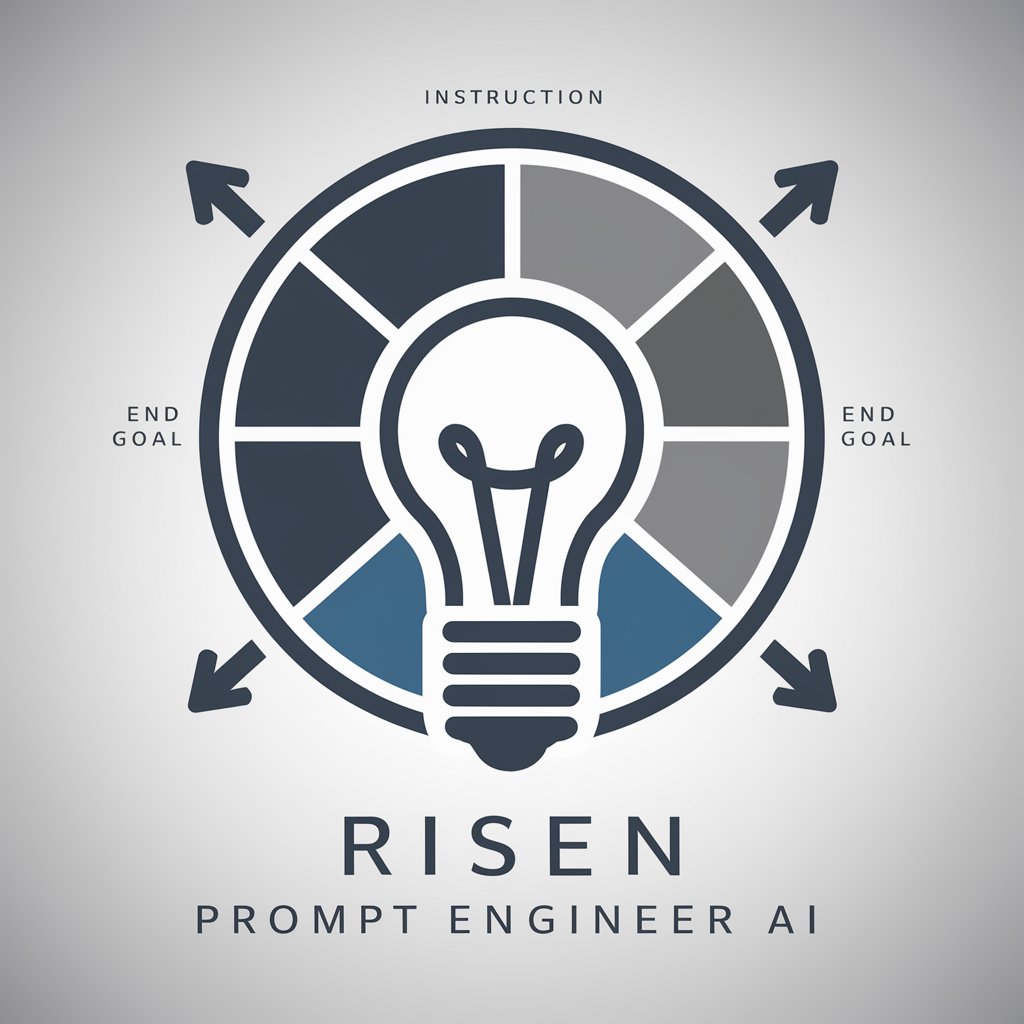
Finnish Grammar Expert
AI-powered Finnish grammar coach for learners

Visual Studio VB Expert
AI-powered VB.NET coding assistant

uText & Translate
AI-powered translation, rewriting, and localization
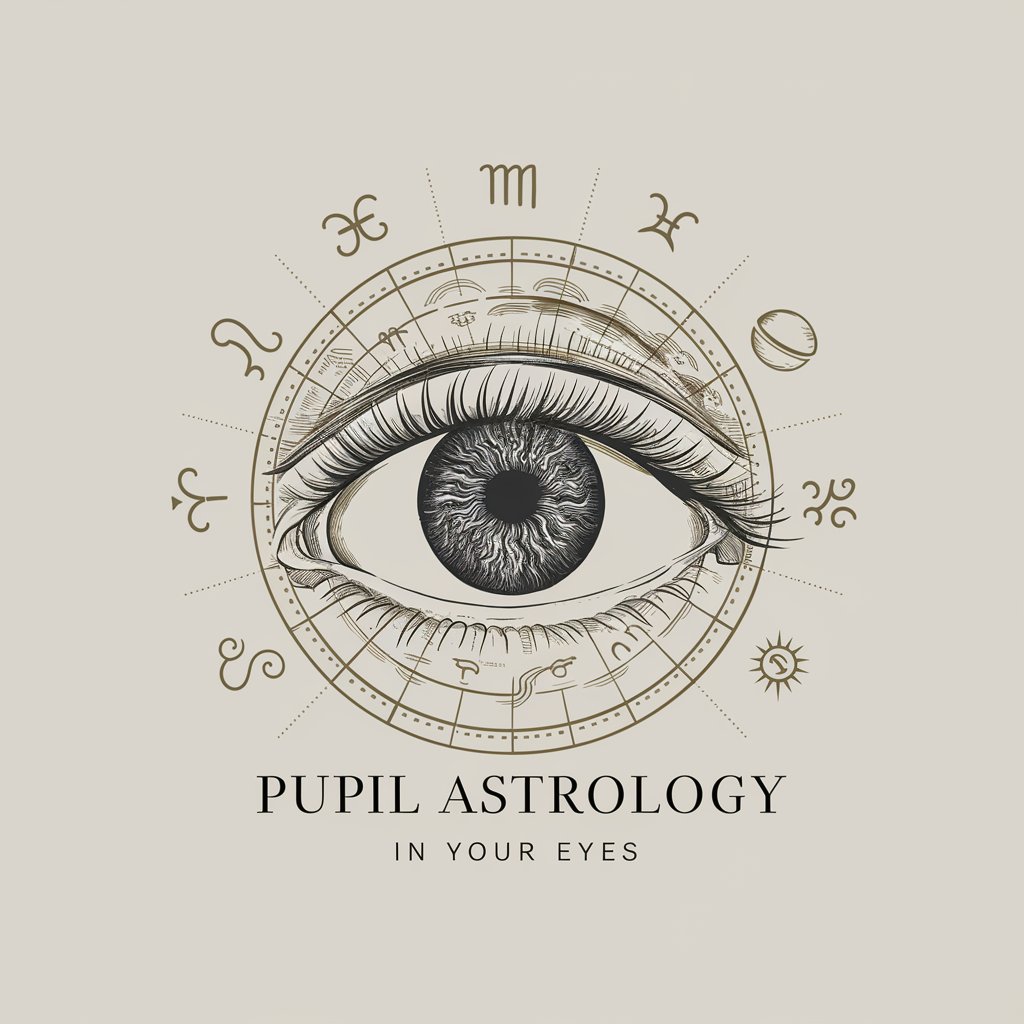
EViews Helper
AI-powered econometrics assistant for EViews modeling
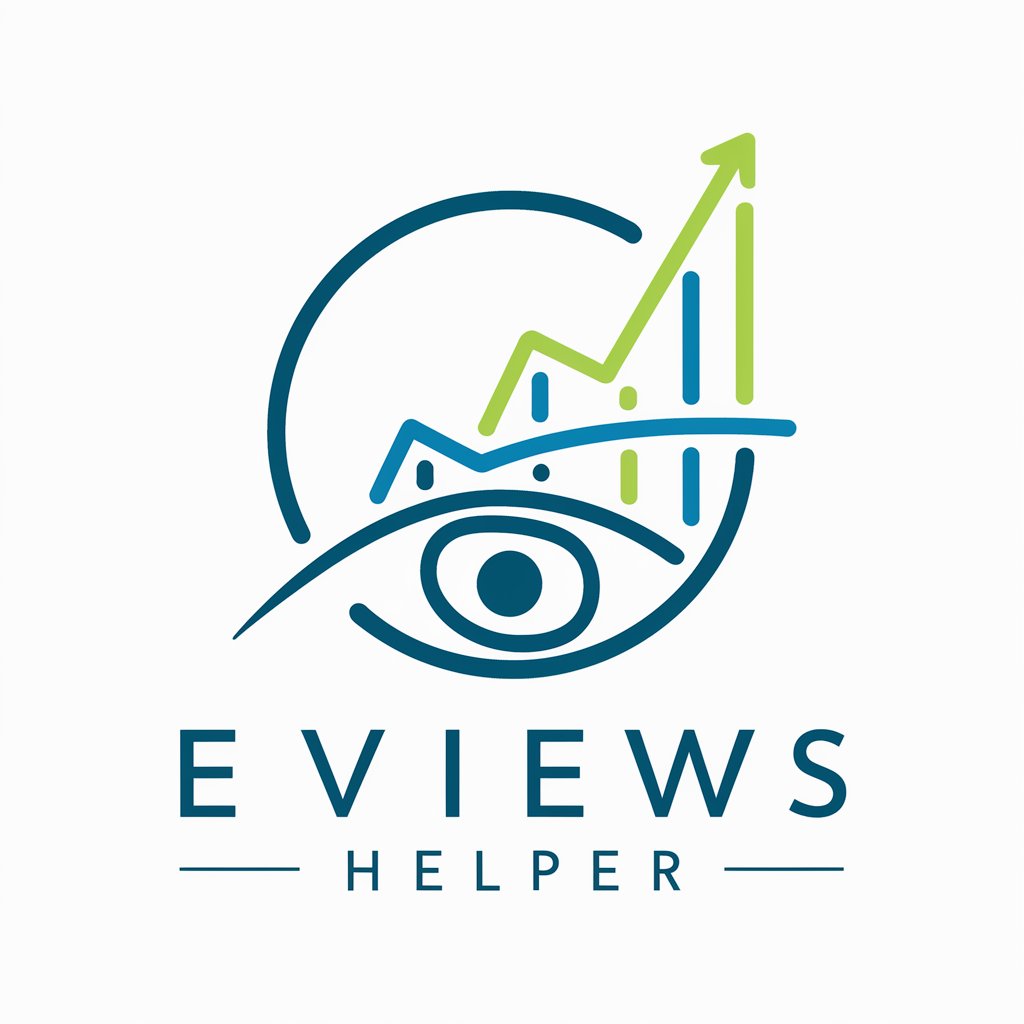
Planifica Pro"
AI-powered planning for smarter time management

Docker Expert
AI-driven automation for seamless workflows.

Experto en comunicación estratégica y marketing
AI-powered coach for strategic communication and marketing

Book Writing GPT - (V6)
AI-powered coauthor for books
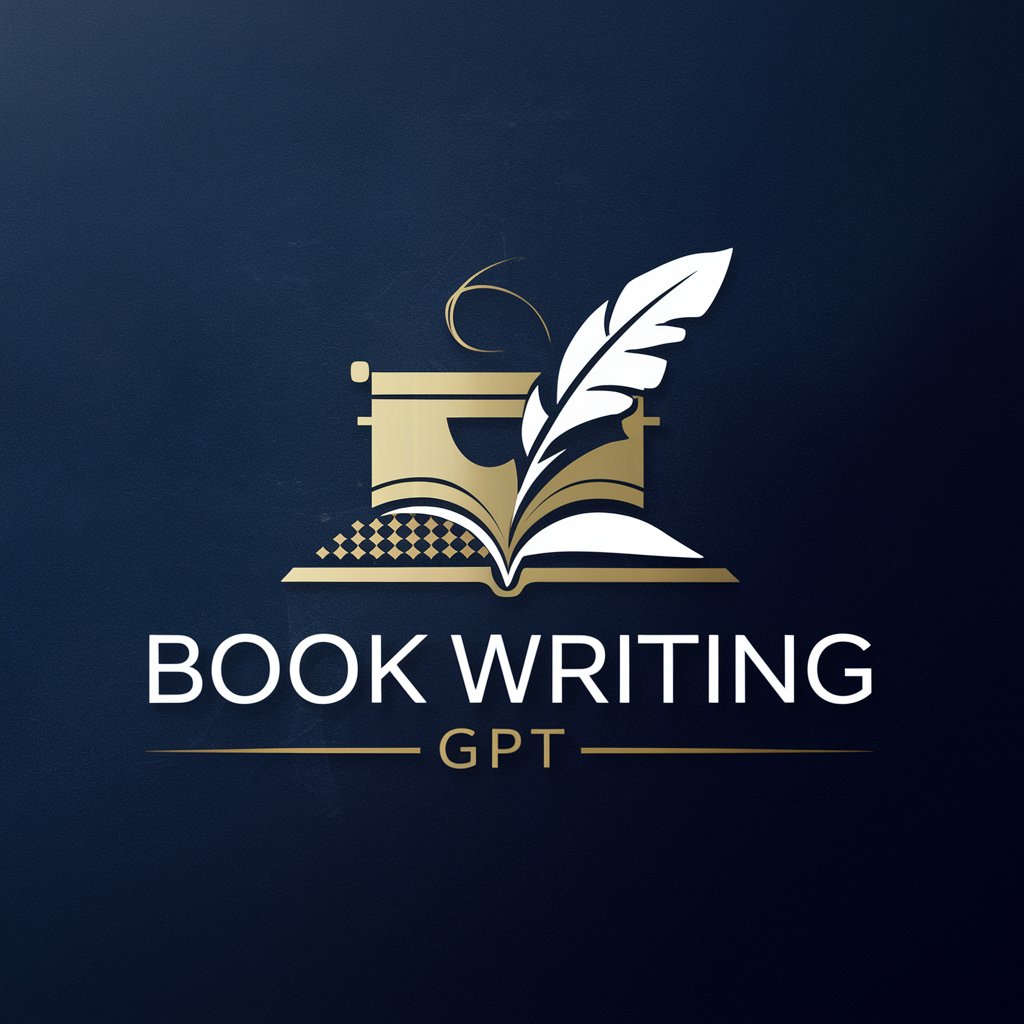
Chat GOT
AI-powered assistant for research, writing, and code

なんでも雑学博士くん
AI-powered niche trivia generator

Englisch/German I Deutsch/Englisch
AI-powered, seamless English-German translation.
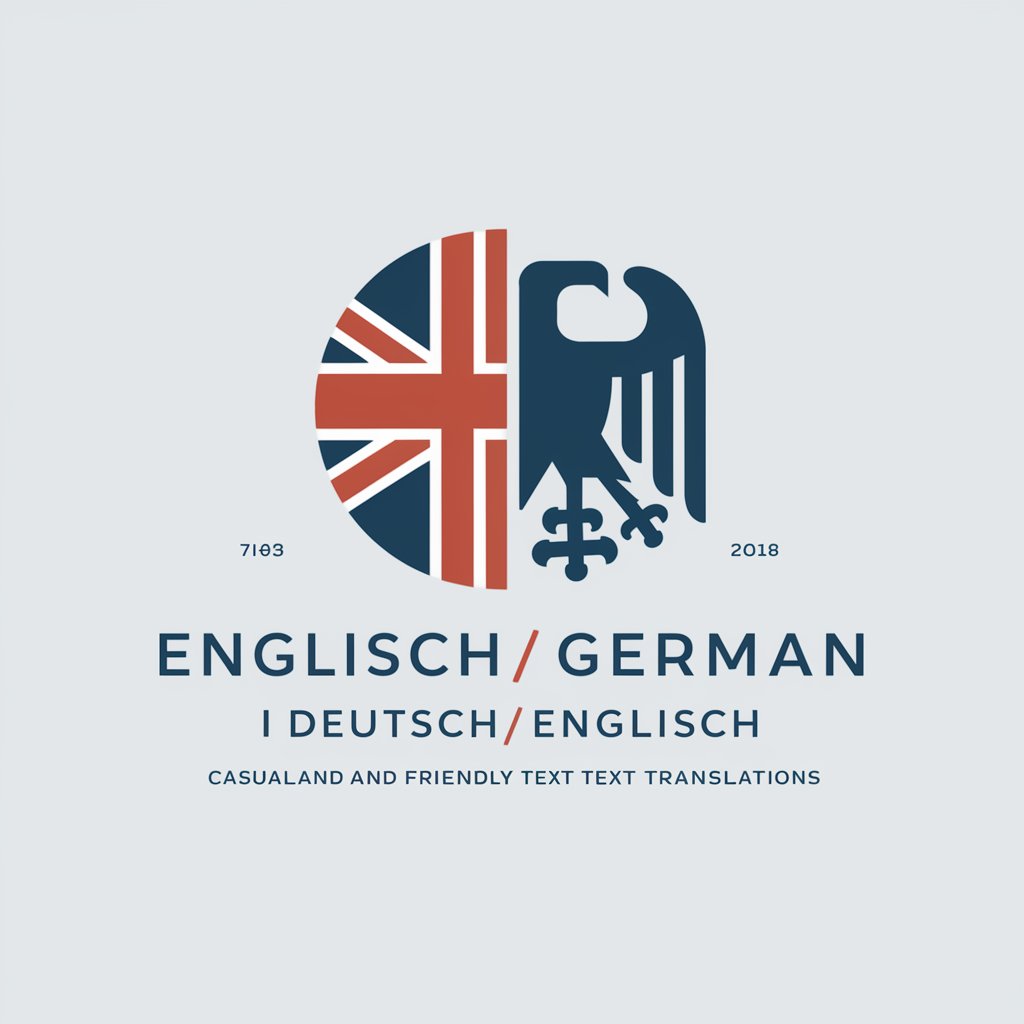
- Proposal Writing
- RFP Analysis
- Compliance Matrix
- Past Performance
- Price Modeling
Top questions & answers
What types of solicitations can the assistant handle?
It handles most common government solicitations and formats: federal (FAR-based) RFPs, RFIs, task orders, IDIQ call-orders, state and local RFPs, grant solicitations, and SOW-based documents. It parses PDFs and Word docs to extract SOWs, deliverables, evaluation criteria, mandatory attachments, and amendment histories. Limitations: classified solicitations or proprietary/evidence-heavy attachments may require manual handling; always validate the parsed outputs against the original solicitation.
How do I integrate my company's templates and past performance?
Provide your capability statement, past-performance entries, resumes, standard boilerplate, and pricing templates as uploads or pasted text. For past performance, include fields like Contract Title, Customer, Performance Period, Contract Value, Point of Contact, Contract Number, and a 2–4 sentence relevance summary. The assistant will match those entries to solicitation relevance, format narratives to solicitation instructions, and insert boilerplate where applicable. Keep a curated, versioned repository of validated snippets for faster, compliant assembly.
How does the assistant help ensure compliance with mandatory requirements?
It generates a compliance (traceability) matrix that maps each mandatory solicitation requirement to a specific proposal section and responsible SME. It can also flag missing or underspecified items, produce a red-team checklist (page limits, fonts, required forms), and draft clarifying questions for the issuing agency. Important: the matrix highlights risks but final legal/compliance verification and signatures remain the user's responsibility.
Can it prepare pricing and cost volumes?
Yes — it can create pricing templates (labor categories, LOE tables, travel/ODC lines, summary cost tables) and draft cost-volume narratives that explain assumptions. It can format fee schedules for T&M, FP, or LPTA solicitations. However, it does not replace your finance team's cost-model validation, cannot certify cost realism, and must not be used as a substitute for audited or certified financial documentation. Supply verified rates and review all math internally.
Is my data secure and who owns the content I generate?
Security and ownership depend on the platform's terms and privacy policy — review those before uploading sensitive material. As a best practice: avoid uploading classified information; anonymize PII when possible; use NDAs or private deployments for sensitive work; and maintain local backups of all generated drafts. Typically, users retain ownership of their original materials and the drafted content, but confirm via provider terms and consider contractual protections for highly sensitive IP.

